Creatures that harm the curry reef come to visit.
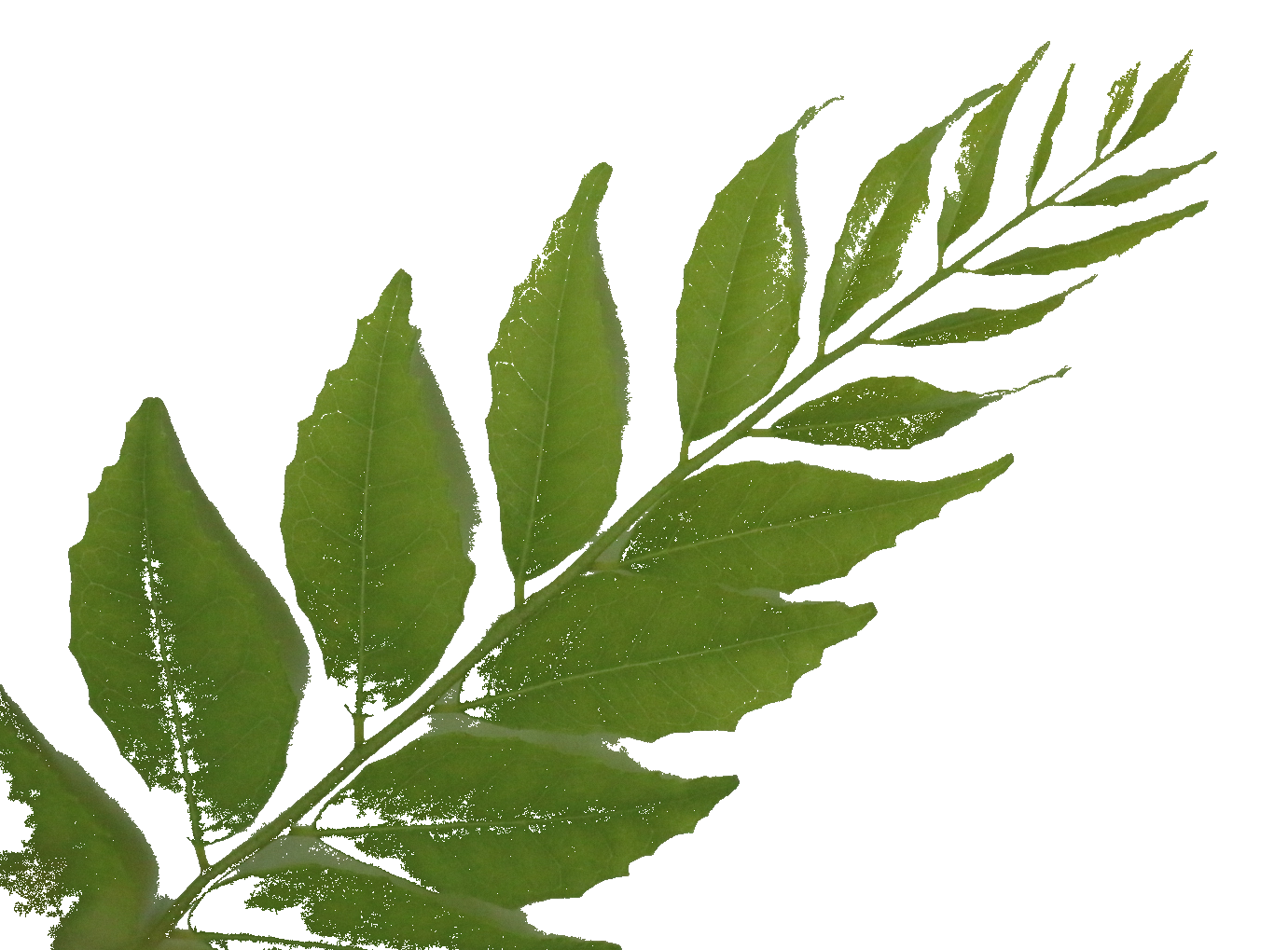 Butterfly and moth larvae
Butterfly and moth larvae
It becomes the spawning place of the swallowtail butterfly and the larvae feed on the leaves. In addition, we can eat eating curry leaf of larva scaleworm and wormworm which are wide and can eat curry leaf. When observing, make sure that some of the leaves are not missing or the young branches are not damaged, and that wet feces are not falling off or adhering to the leaves.
 Spider mite, Red mite
Spider mite, Red mite
Even smaller than brown poppy grains. It is easy to get behind the leaves, and it gathers at a growing point like a young sprout to make a fine web. When dried, it is easy to attach a spider mite and to grow easily. It is a point of caution for indoor cultivation in winter. As soon as you find them, it is highly recommended to remove the web.

One of the effective and simple measure to get rid of the spider mites is to take the pots to where you can shower the back or the leaves, and wash the spider mites away with strong enough water pressure.
Please be sure not to clog the drain of the shower room or sink in the kitchen wherever you may use shower to do this process.
You might worry about if you loose leaves by showering the plant, but such leaves removed by shower should be lost from the plant sooner or later, so you should not worry about that.
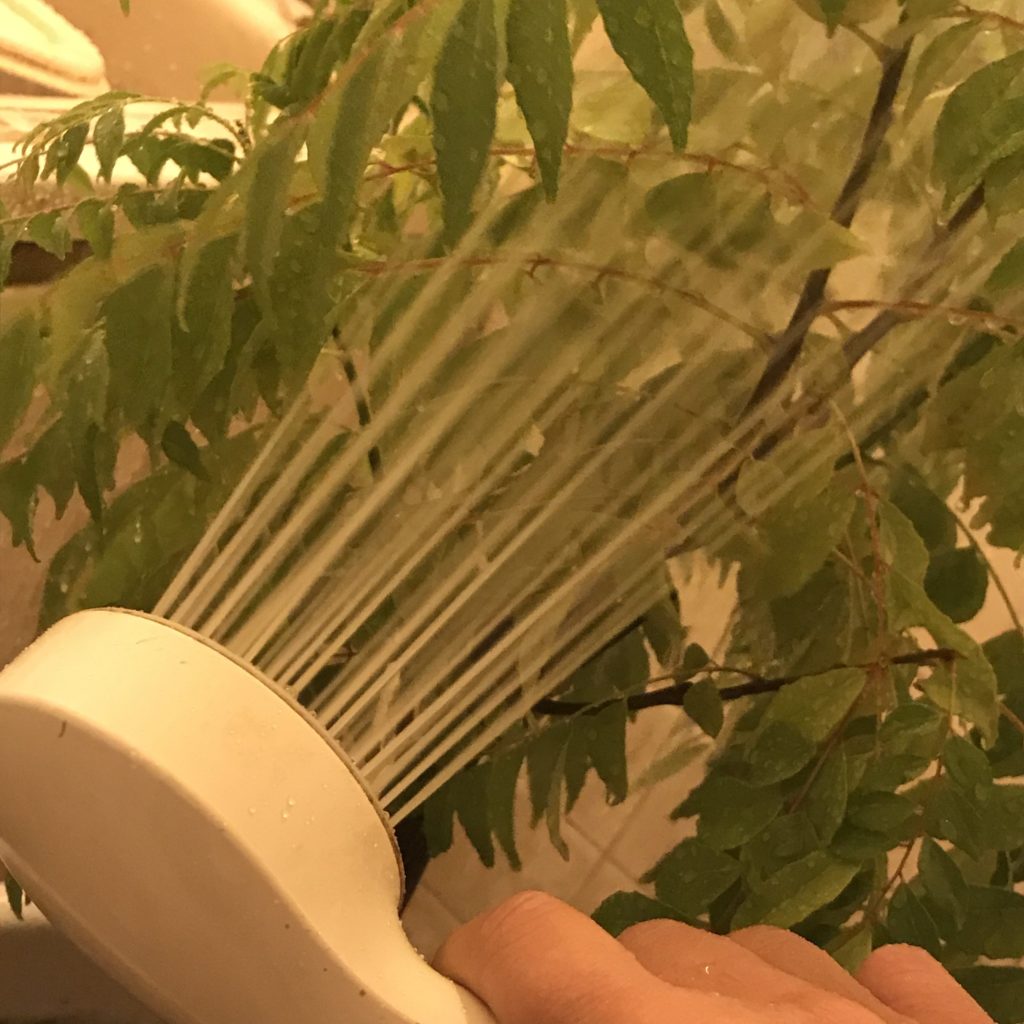
 Scale insect
Scale insect
Scale insect attached to the back of the leaf
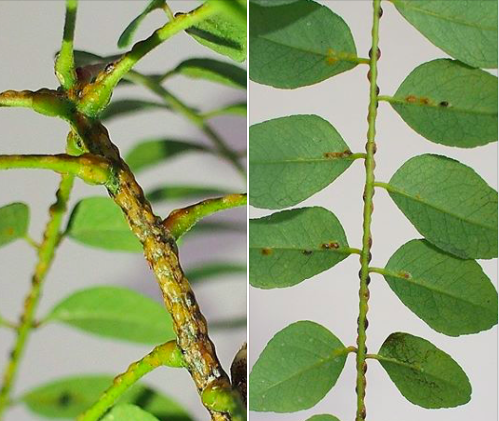
The state that the honeydew of the secretion remained in the leaf
Gather on the back of the soft stems and leaves that can absorb curry leaf juice. When you become an adult, the legs disappear and you can not move, so you can get rid of them by scraping them with an old toothbrush or your fingertips. The larvae are so small that they are difficult to find by eye. As scale insects increase, the energy of curry reef is lost. If you think that the curry leaf is not healthy when it gets warm, check the back of the stems, branches and leaves.
You may notice it because the honeydew secreted by the scale insects is left in the leaves and it is sticky. Since the fungus that soothes leaves darkens this secretion, it is more likely to develop sooty mold disease.
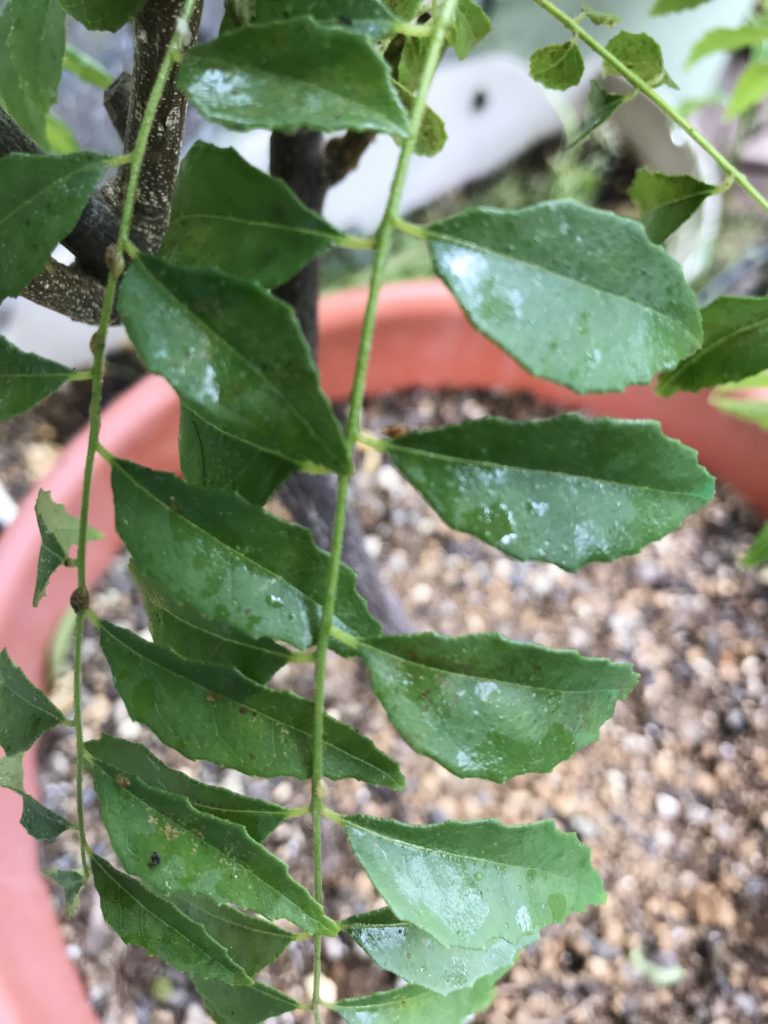
 Aphid
Aphid
Like the scale insects, it gathers to suck the curry leaf juice. It is most effective to squeeze or pinch with your fingertips, it can be also removed by rubbing with a toothbrush. There is also a method to catch with adhesive tape.
 Woolly Aphid
Woolly Aphid
It is like a fluffy grey things on the leaves where attached to the sprig. (as circled in the pic) It is called Woolly Aphid (Shivaphis celti) which takes juice from the plant, thus best to crush them with finger tips, because some of them have wings so that just rubbing them off from the plant still leave risk of the insects travel and spread in the area.
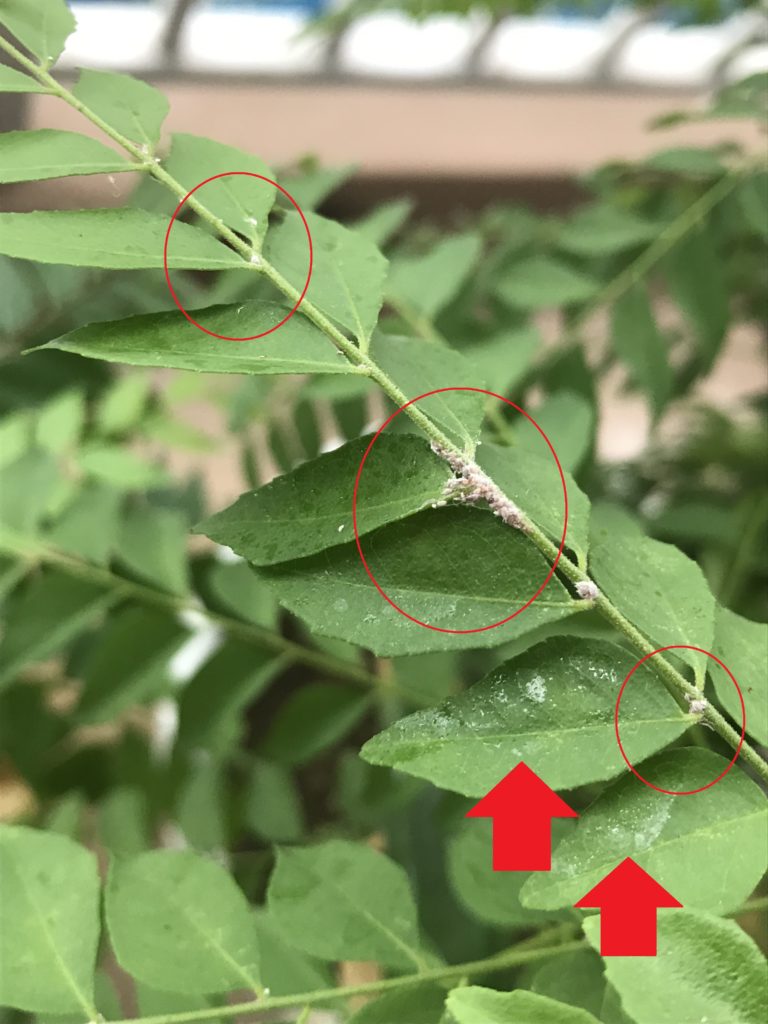
 Slug
Slug
They move in a moist environment and damage the leaves, young sprout, flowers and buds. As it moves with gleaming mucous, it is necessary to check if the leaves have been eaten if you find the mark.
 Leaf Cutting Bees
Leaf Cutting Bees
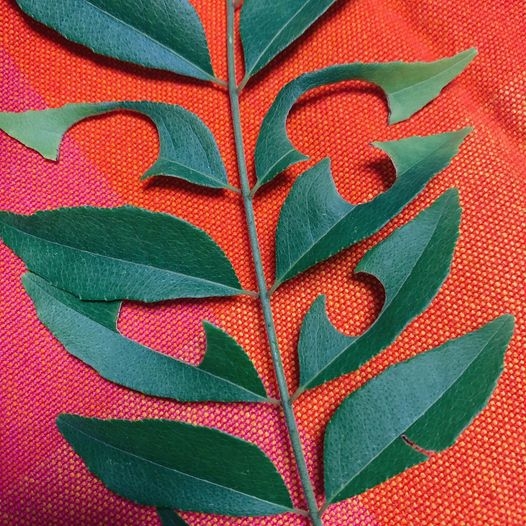
It is called Sculptured Resin Bees which is a family of the Leaf Cutting Bees. They do not eat the leaves for themselves, but they cut and use the leaves to structure their nests. The leaves they cut do not have to be curry leaves, but once the curry leaf plant is found to be adequate for them, they should be coming back to cut some more. Small plants will lose leaves for photosynthesis, therefore, if you do not wish to get further damage, it should be good to take the plants inside or cover with nets for a while.
